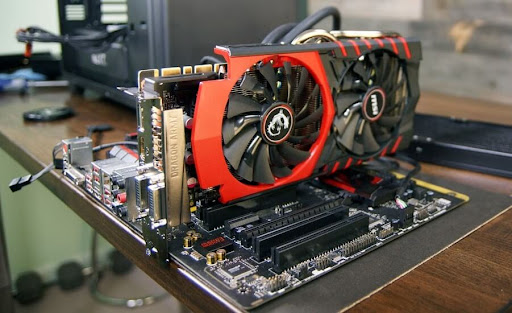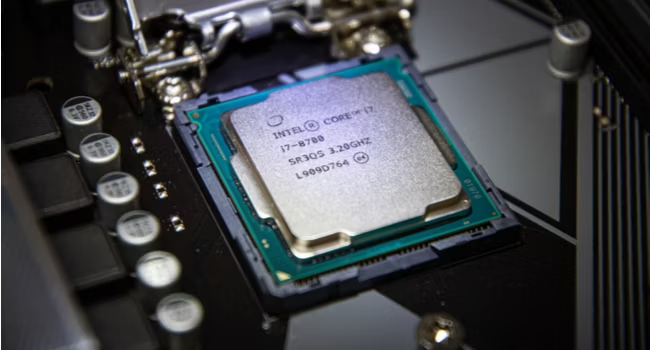While motherboards can bottleneck GPUs, it’s relatively uncommon with modern hardware. Ensuring your motherboard has the appropriate PCIe version, lanes, chipset, and power delivery system can prevent bottlenecks and optimize GPU performance.
Let’s delve into the concept of bottlenecking, how it relates to motherboards and GPUs, and what factors you should consider to ensure optimal performance.
What is Bottlenecking?
Bottlenecking occurs when one component of a system limits the performance of another component. In the context of PCs, it often refers to scenarios where a powerful GPU is held back by other hardware components, such as the CPU or motherboard, resulting in suboptimal performance.
Can a Motherboard Bottleneck a GPU?

The short answer is yes, but it’s not as common as CPU or RAM bottlenecking. A motherboard can potentially bottleneck a GPU in a few specific scenarios:
- PCIe Slot Version and Bandwidth: Modern GPUs typically use PCIe (Peripheral Component Interconnect Express) slots to connect to the motherboard. The version and bandwidth of these slots can impact performance. For example, PCIe 4.0 offers double the bandwidth of PCIe 3.0. If you pair a high-end GPU with an older motherboard that only supports PCIe 2.0, you might not utilize the full potential of the GPU.
- PCIe Slot Configuration: Motherboards come with different PCIe slot configurations. If a GPU is installed in a slot that doesn’t provide the required number of PCIe lanes, it can result in a performance bottleneck. High-end GPUs generally require x16 lanes for optimal performance.
- Chipset Limitations: The chipset of a motherboard determines its features and connectivity options. Entry-level chipsets might not support the latest PCIe versions or may have limited PCIe lanes, affecting the performance of high-end GPUs.
- Power Delivery and VRM Quality: The quality of the motherboard’s VRM (Voltage Regulator Module) can affect the stability and performance of the GPU, especially if you’re overclocking. Poor power delivery can lead to throttling and instability, indirectly bottlenecking the GPU.
- BIOS and Firmware Updates: Older motherboards may require BIOS updates to fully support newer GPUs. Without these updates, compatibility and performance issues can arise.
Detailed Factors to Consider When Choosing a Motherboard for Your GPU:
To avoid potential bottlenecks, consider the following factors when selecting a motherboard:
PCIe Version and Lanes:
Ensure the motherboard supports at least PCIe 3.0 x16 for modern GPUs. PCIe 4.0 support is preferable for future-proofing.
- Bandwidth: PCIe 4.0 x16 offers 32 GB/s bandwidth, compared to 16 GB/s for PCIe 3.0 x16. High-end GPUs can utilize this extra bandwidth, resulting in better performance.
- Future-proofing: Investing in a motherboard with PCIe 4.0 or even PCIe 5.0 ensures compatibility with future GPUs and other high-bandwidth peripherals.
Chipset Compatibility:
Choose a motherboard with a chipset that supports your GPU’s features and performance requirements. Higher-end chipsets generally offer better PCIe support and more connectivity options.
- High-end chipsets: Chipsets like Intel Z-series or AMD X-series support more PCIe lanes, faster USB ports, and advanced storage options (e.g., NVMe SSDs).
- Entry-level chipsets: These may have limited PCIe lanes and lack support for the latest technologies, potentially bottlenecking high-performance GPUs.
Power Delivery System:
Look for motherboards with robust VRMs, especially if you plan to overclock. A quality VRM can provide stable power to the GPU, ensuring consistent performance.
- VRM quality: High-quality VRMs ensure stable voltage delivery, crucial for overclocking and maintaining performance under heavy loads.
- Heat dissipation: Effective cooling solutions for VRMs prevent overheating, which can cause throttling and reduce the lifespan of components.
Also Read: Can You Use Intel Cpu With Amd Gpu – A Comprehensive Overview!
BIOS and Firmware Updates:
Ensure the motherboard manufacturer provides regular BIOS and firmware updates. These updates can improve compatibility and performance with new GPUs.
- BIOS support: Regular updates ensure that the motherboard can fully utilize the latest GPUs and other hardware components.
- Compatibility fixes: Updates can resolve compatibility issues and introduce new features, enhancing overall system performance.
Form Factor and Physical Compatibility:
Ensure the motherboard fits your case and has enough space for the GPU, especially if you have a large or multi-GPU setup.
- ATX vs. Micro-ATX vs. Mini-ITX: Different form factors offer varying levels of expandability and space for components.
- Clearance: Check the physical space in your case to ensure it can accommodate large GPUs and provide adequate airflow.
How to Identify a Motherboard Bottleneck:

If you’re experiencing lower-than-expected GPU performance, consider the following diagnostic steps:
Benchmarking:
- Use benchmarking tools (e.g., 3DMark, Unigine Heaven) to compare your GPU’s performance against similar systems.
- Look for significant deviations that could indicate a bottleneck.
Monitoring Tools:
- Use tools like MSI Afterburner or HWMonitor to track GPU usage, temperatures, and clock speeds during gaming or heavy workloads.
- Consistently low GPU usage might indicate a bottleneck elsewhere in the system.
BIOS Updates:
- Check the motherboard manufacturer’s website for BIOS updates.
- Update the BIOS if newer versions improve GPU compatibility or performance.
Check PCIe Slot:
- Ensure the GPU is installed in the primary PCIe x16 slot.
- Check the motherboard manual to confirm the slot’s PCIe version and lane configuration.
FAQ’s
1. What is bottlenecking in a PC?
Bottlenecking occurs when one component limits the performance of another, often seen when a powerful GPU is held back by a weaker CPU or motherboard.
2. Can a motherboard bottleneck a GPU?
Yes, a motherboard can bottleneck a GPU, particularly if it has an outdated PCIe version, insufficient PCIe lanes, or a poor power delivery system.
3. How does PCIe version affect GPU performance?
Newer PCIe versions offer higher bandwidth, which can improve GPU performance. For example, PCIe 4.0 provides double the bandwidth of PCIe 3.0.
4. What should I look for in a motherboard to avoid GPU bottlenecks?
Ensure the motherboard supports at least PCIe 3.0 x16, has a compatible chipset, robust VRMs, and receives regular BIOS updates.
5. How can I tell if my motherboard is bottlenecking my GPU?
Use benchmarking and monitoring tools to check GPU usage and performance. Consistently low GPU usage might indicate a bottleneck, and ensuring the GPU is in the primary PCIe x16 slot is essential.
Conclusion
While motherboards can bottleneck GPUs under certain conditions, it’s relatively uncommon with modern hardware. By selecting a motherboard with the appropriate PCIe version, lanes, chipset, and power delivery system, you can ensure that your GPU performs at its best. Always check compatibility and read reviews to make an informed decision. By paying attention to these factors, you can avoid potential bottlenecks and enjoy a seamless gaming or computing experience.
